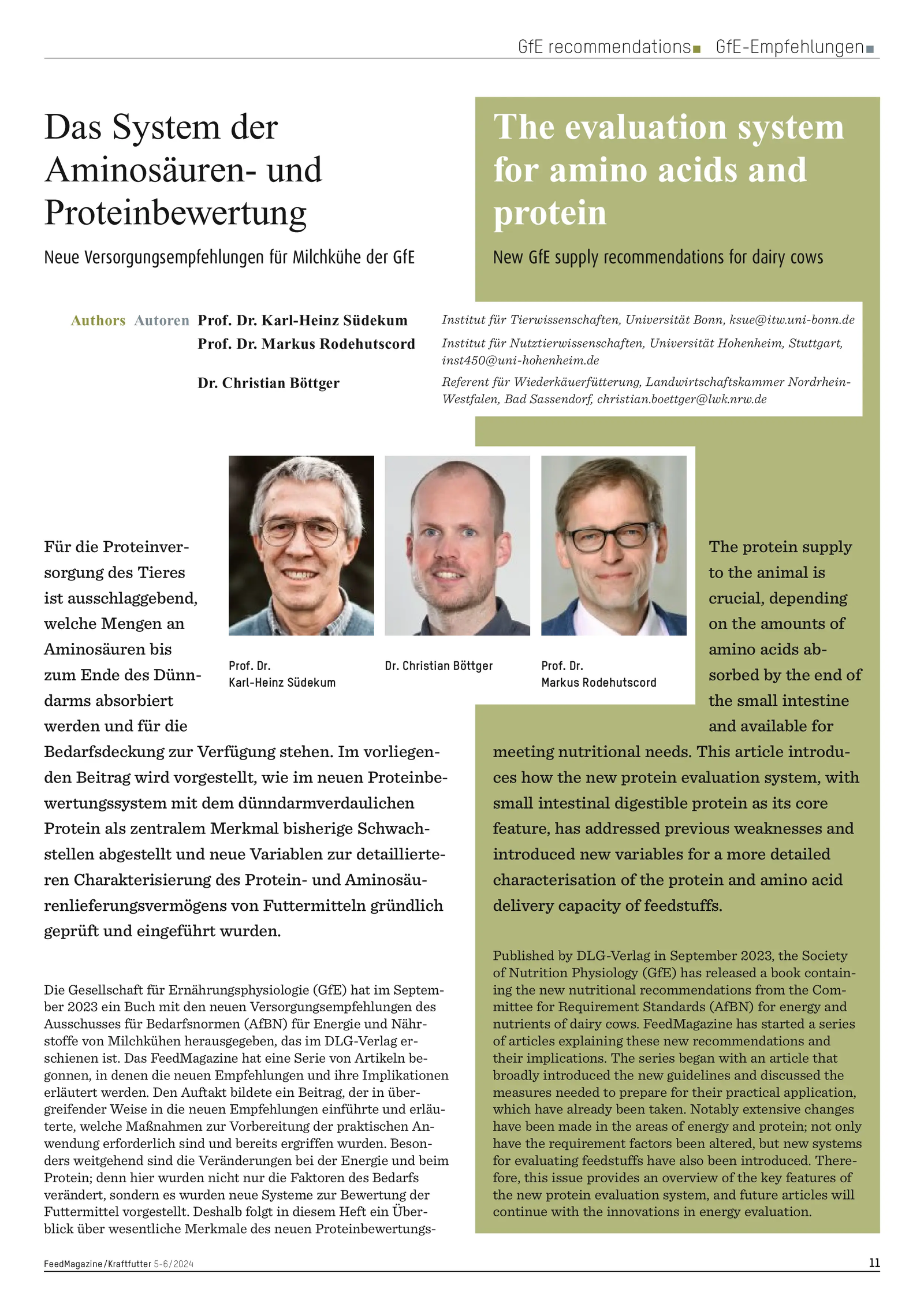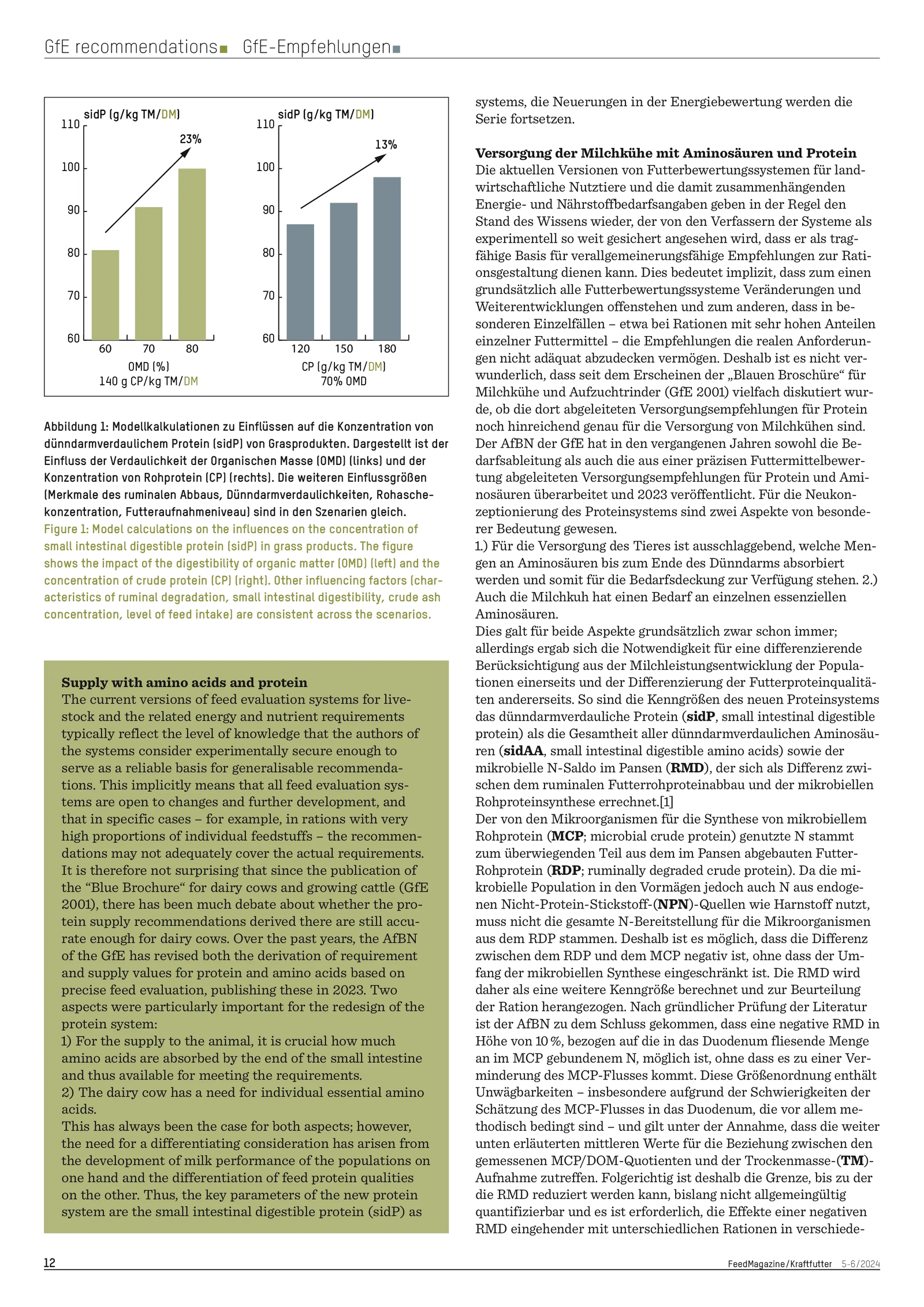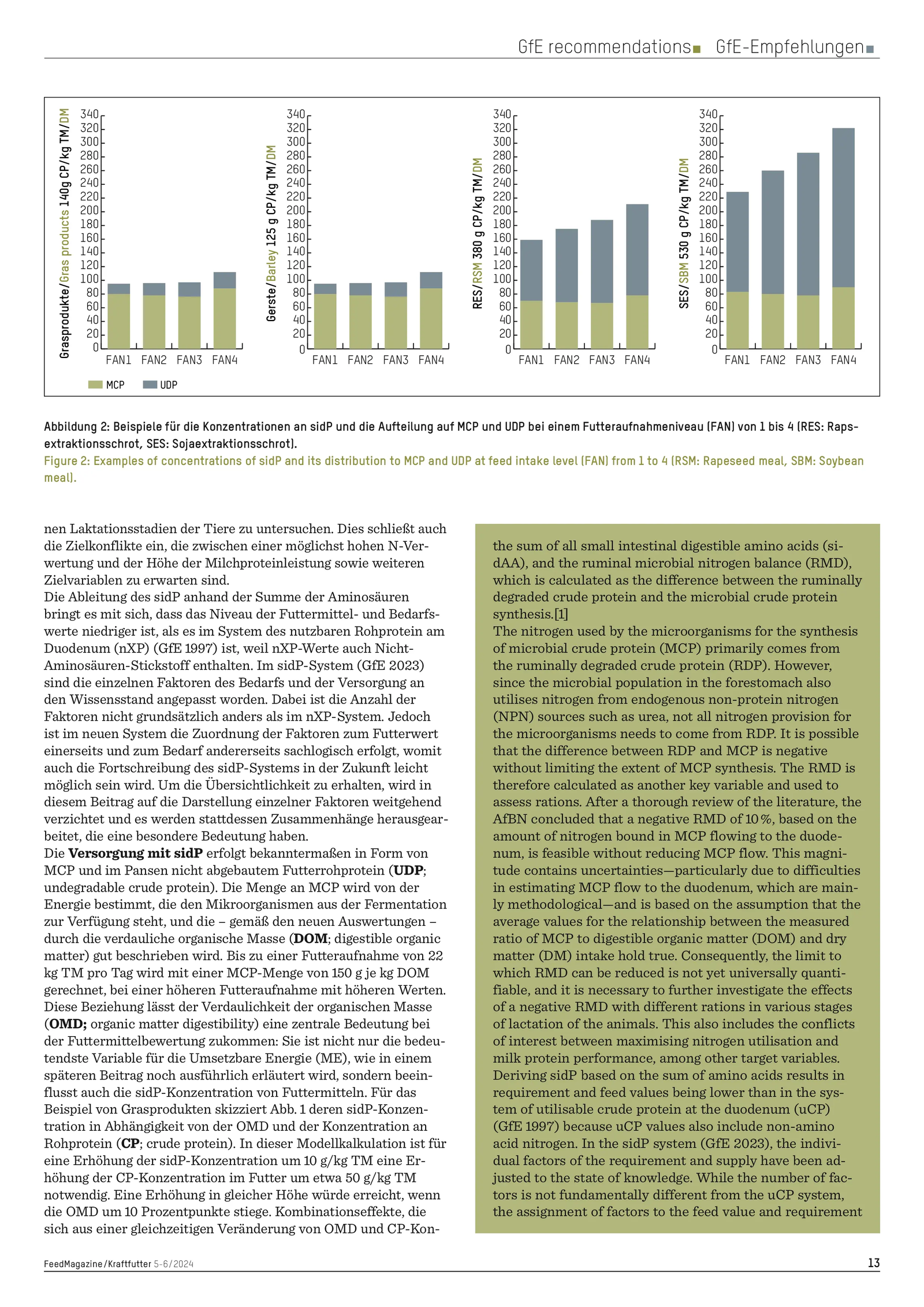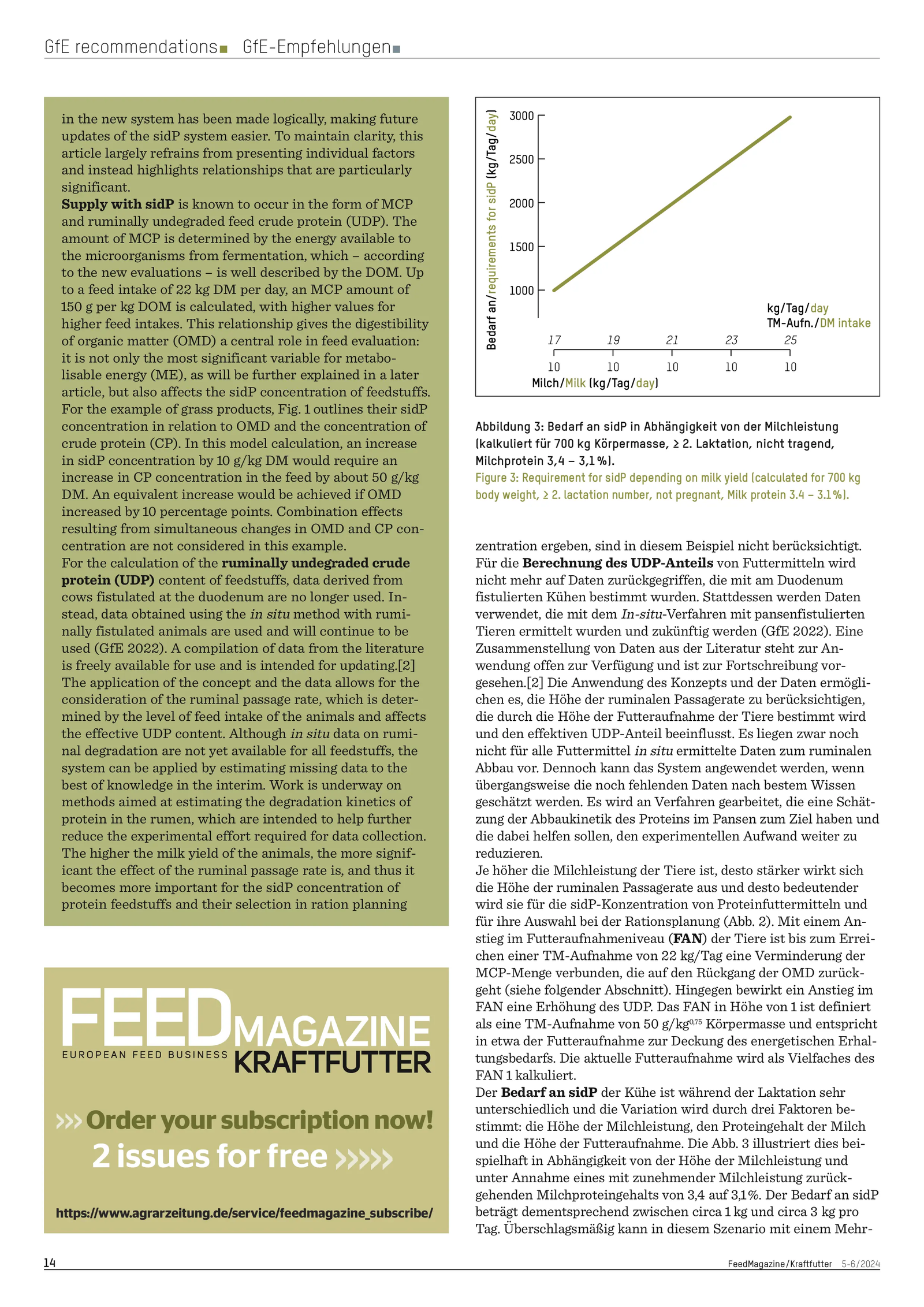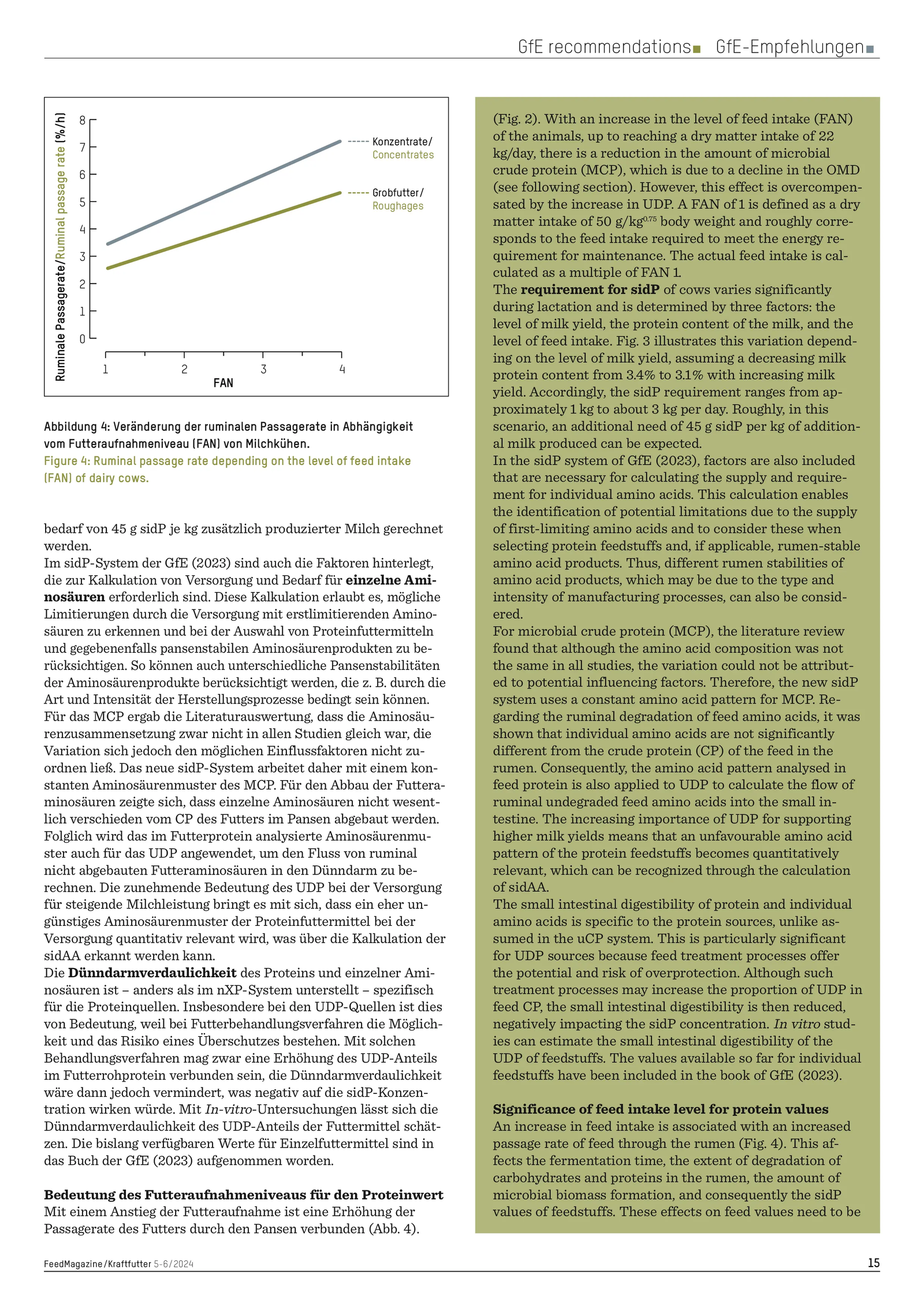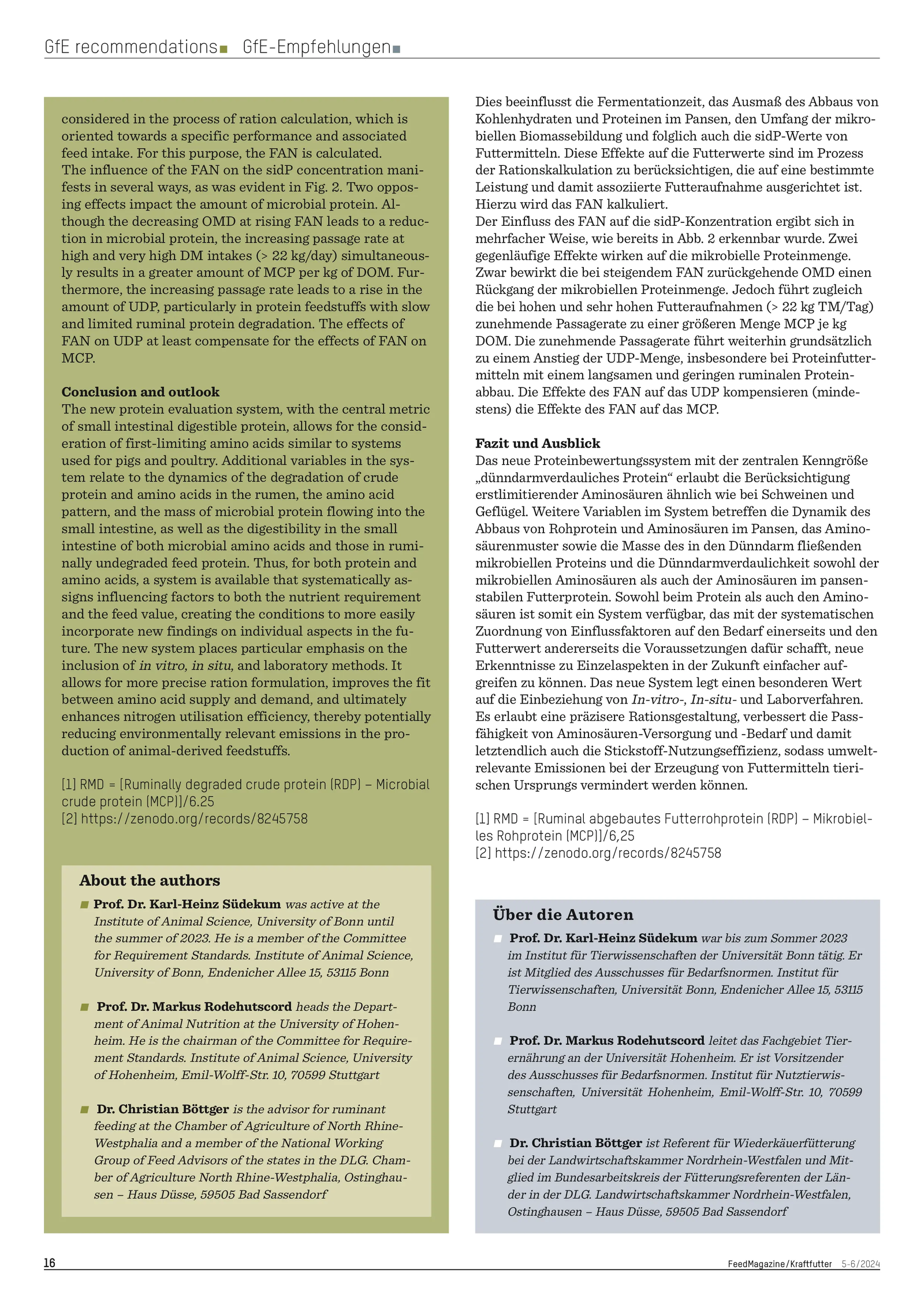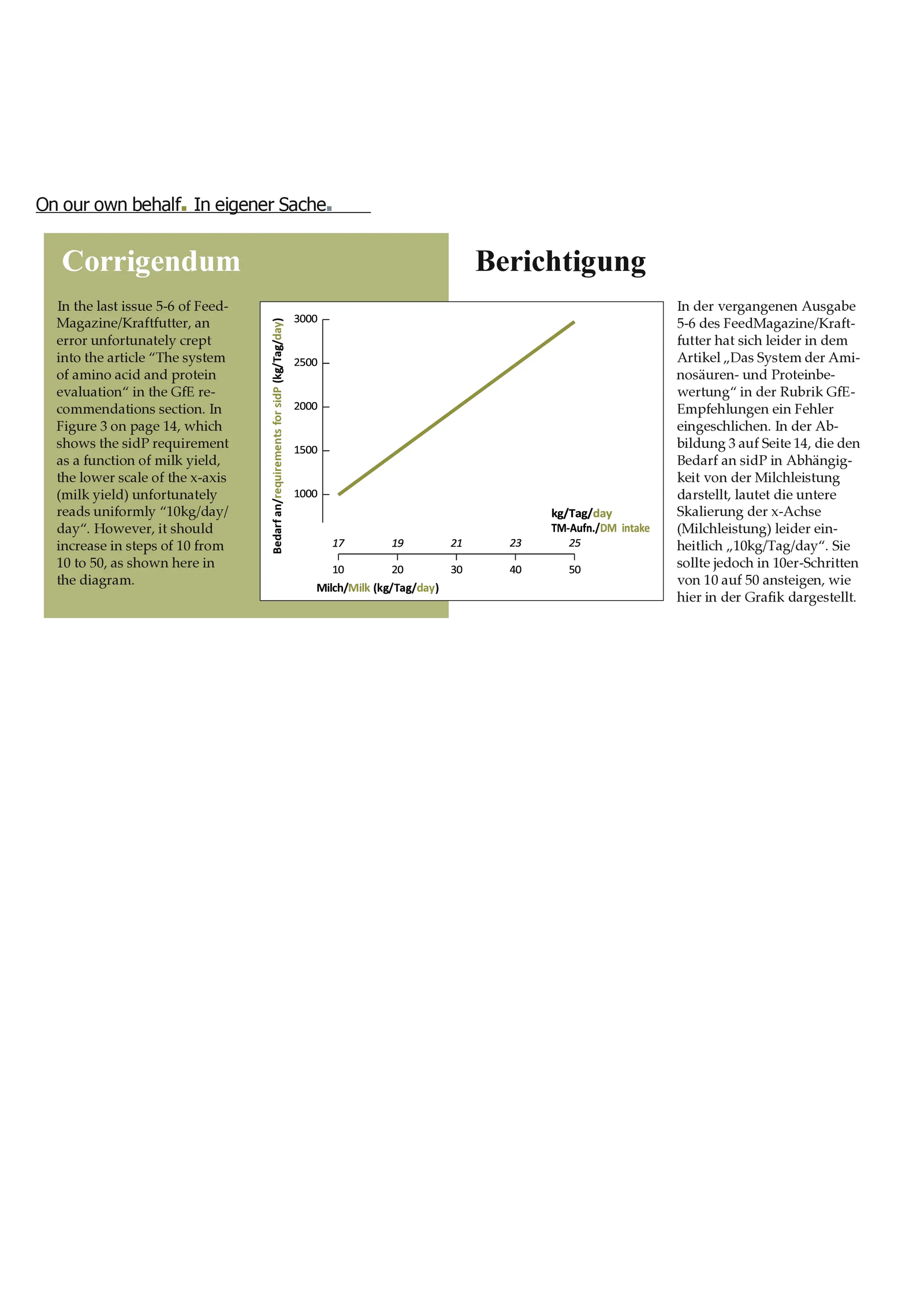Source: FeedMagazine/Kraftfutter 5-6/2024
Authors: Prof. Dr. Karl-Heinz Südekum; Dr. Christian Böttger, Prof. Dr.Markus Rodehutscord
In September 2023, the Society of Nutrition Physiology (GfE) published updated supply recommendations for dairy cows, introducing a fundamentally revised protein evaluation system. This system places small intestinal digestible protein (sidP) at its core.
Key Features and Technical Innovations
Protein Supply and Amino Acid Delivery:
The new approach focuses on the actual amounts of amino acids absorbed by the end of the small intestine. In this context, sidP is defined as the sum of all small intestinal digestible amino acids (sidAA), and the system also integrates the microbial nitrogen balance (RMD).
Distinction Between MCP and UDP:
Protein supply to the animal is considered in two forms: microbial crude protein (MCP) and ruminally undegraded feed protein (UDP). While MCP is determined by the energy available from fermentable digestible organic matter (DOM), UDP represents the fraction of feed protein that escapes ruminal degradation.
Influence of Feed Intake Level (FAN):
The system incorporates the level of feed intake—quantified as FAN. Increasing FAN alters the ruminal passage rate, which has dual effects: a decrease in MCP due to reduced organic matter digestibility (OMD) and an increase in UDP, especially in protein feedstuffs with slower ruminal degradation.
Assessment of Individual Amino Acids:
The revised system also details the supply and requirements for individual amino acids, allowing for the identification of potential limitations from first-limiting amino acids. This enables more targeted use of rumen-stable amino acid products when necessary, and supports a more precise alignment between the animal’s demand and the feed’s amino acid profile.
Conclusion and Outlook
By systematically linking influencing factors to both nutrient requirements and feed values through the integration of in vitro, in situ, and laboratory methods, the new protein evaluation system facilitates more precise ration formulation and optimizes nitrogen utilization efficiency. This, in turn, is expected to enhance milk protein performance and reduce environmentally relevant emissions from feed production. The updated approach marks a significant advancement in the nutritional management of high-producing dairy cows, ensuring that the GfE recommendations remain internationally competitive and scientifically robust.
The New Regulations for Dairy Cow Feeding in HYBRIMIN Futter X
The latest GfE recommendations are integrated into HYBRIMIN Futter X. Contact our support team for more information.
 Croatian
Croatian Danish
Danish French
French German
German Greek
Greek Polish
Polish Portuguese
Portuguese Romanian
Romanian Russian
Russian Spanish
Spanish Turkish
Turkish